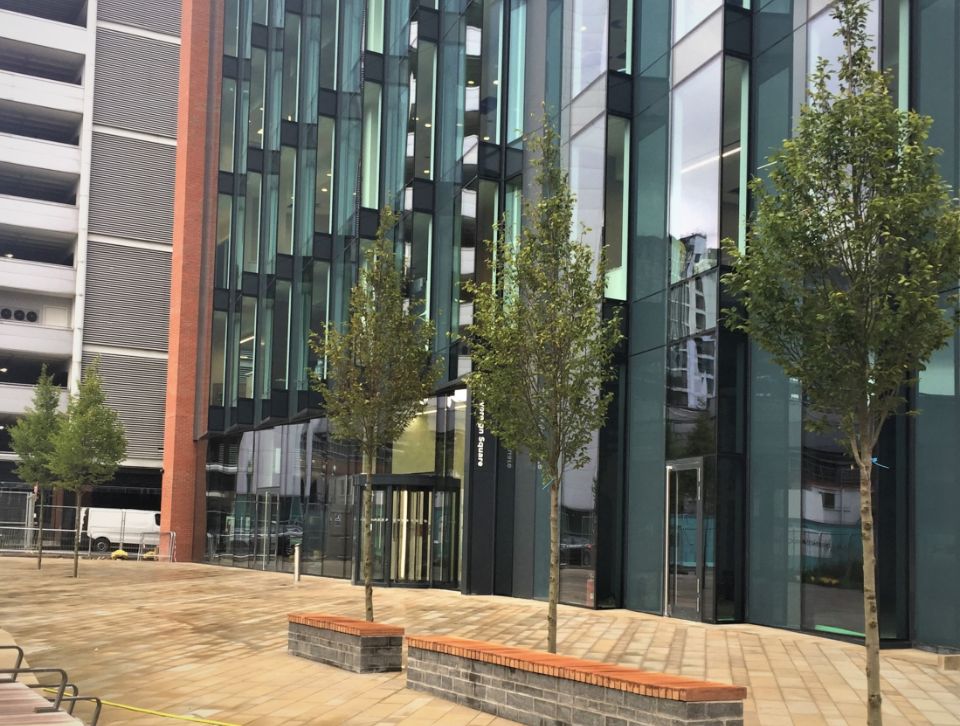Street trees on Seagrave Road in London are thriving, while Silva Cells simultaneously assist in at-source stormwater treatment

The Earls Court redevelopment initiative is a multi-decade plan to reconfigure the London community as a mixed-use neighbourhood with new housing, commercial offices, and green space. One of the earliest phases — addressing the outskirts of the project district — took place at Lillie Square along Seagrave Road, an old exhibition center and car park that was transformed into a modern residential building. Along the east side of Seagrave Road and lining both sides of the drive leading to the facility’s entry are street trees: each one planted in Silva Cells in 2018, which support the local traffic and street parking above while providing soil volume and stormwater treatment benefits below.
Number of Silva Cells: 162 (3x)
Number of Trees: 20
Type of Project: Streetscape, Stormwater
Project Designer: Andy Sturgeon Landscape and Garden Design
Project Contractor: FM Conway
Installation Date of Silva Cells: Spring 2018


In 2010, Earls Court — part of the Kensington borough in west central London with a rich history dating back centuries to the De Vere family, the “Earls of Oxford” — had been identified as an Opportunity Area (OA) by the Mayor’s London Plan. Shortly thereafter, an enormous, multi-phase redevelopment scheme was unveiled. The earliest vision for the rejuvenated Earls Court observed “the potential to bring economic opportunity, new homes and new jobs on a grand scale.”
In addition to creating a revitalised economic and residential district, this redevelopment plan embraced the power of green infrastructure (GI): “Street trees play an important role in the perception of a pleasant pedestrian experience. They contribute to street enclosure, reduce the visual impact of taller buildings and parked cars, provide shade and shelter and demarcate the footway. Street trees could also help to integrate the new neighbourhood into its existing context.”
The first phase of the project, as noted by My London, took place at the district’s outskirts of Lillie Square with “the transformation of a car park in Seagrave Road into 808 high-end homes set around a new garden square.” The Hammersmith and Fulham Council gave the go-ahead in the mid-2010s for this development, of which nearly a quarter of the new homes were to be earmarked for estate residents.


Lillie Square adopted GI into their development plans from the outset, planting a series of street trees along both Seagrave Road and the entry drive to the residential plaza. A total of 162 (3x) Silva Cells were installed in 2018, tasked with providing these new plantings with lightly compacted soil for healthy root expansion. The system is also supporting the hardscapes above, serving as a foundation for street parking on Seagrave Road and for local traffic along the plaza entry street — and, of particular importance to project planners, no parking was sacrificed. More than half a decade later, and there have been no loading issues at all: the system’s 300mm of aggregate below a block paver have served as a solid support system for the traffic above.
Likewise following in the Earls Court initial 2012 planning document, which states that “the development must incorporate SuDS to reduce the volume and rate of surface runoff entering the stormwater network,” Lillie Square integrated green stormwater features into its plans — entrusting Silva Cells with the dual-purpose GI role of growing big trees and helping treat stormwater runoff on location. Steve Chatwin-Grindey, DeepRoot Urban Solutions Commercial Director, was crucial in helping the local council and the team at Andy Sturgeon Landscape and Garden Design realise the concurrent benefits of the Silva Cells. Permeable pavement was installed above the system, directing runoff from both the road and the footpaths into the Silva Cell void space where it filters through the nutrient-rich soil and is slowed and cleansed before entering the municipal sewer.
The Silva Cells have thus far performed optimally: the trees are on their way to healthy maturity and there has been no localised flooding in the area, a dual-purpose success story.
For other DeepRoot projects in the London area, check out our case studies here, here, and here.


After a car moves from its parking space, the dry spot underneath indicates the functionality of the Silva Cells below: taking in water and not pooling the runoff on the hardscape.
